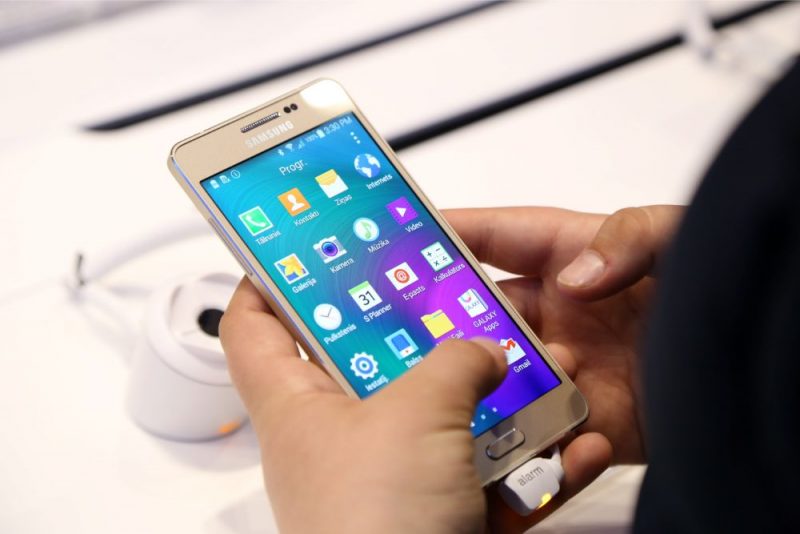
Illustrative photo.
Photo: Evija Trifanova/LETA
Tired of buying a new phone every two years? “Fairphone” serves for years and does not exploit miners. Want a smartphone that doesn’t cost a fortune? This is how “Fairphone” fights electronic waste, environmental damage and labor exploitation, as reported by foreign media “Euronews“.
VIDEO. A forest camera captures rare footage during the night: a badger met a lynx. Who was stronger?
VIDEO. The court releases the man who stabbed his wife ten times who wanted a divorce and tried to cut his own veins from custody
Read other posts
In the next couple of years, the number of mobile phones in the world is expected to exceed the number of people, reaching a “staggering” 18 billion by 2025. And only 20 percent of the roughly 1.5 billion smartphones sold each year are later recycled.
Most of us are aware of these growing mountains of e-waste and the other side of the problem: the mineral mines where, in the search for the minerals needed to make our smartphones, human rights are buried at the same time.
But with phones at the center of our lives and in our hands for most of the day, it’s all too easy to ignore the real damage they do to the environment. The failings of the mobile phone industry may seem like just another way in which our everyday consumption inevitably causes harm from afar – like our appetite for avocados or our penchant for wearing ‘fast fashion’ clothes.
But there is also another option. Even in this globalized system, there is a way to be an ethical consumer, and there is one phone that has come out on top in terms of environmental and social performance – the Fairphone, writes Euronews.
The Fairphone, launched in 2012 by a Dutch social enterprise, is unique in that the spare parts of this mobile phone are universally available and can therefore be repaired with the most common screwdriver. “Fairphone” has also taken great care to ensure that all raw materials used in its production are obtained in the most socially responsible way possible.
As part of the European Union (EU) Green Week, which also sheds light on circular economy issues, “Euronews” met with Fairphone Impact Innovation director Monique Lempers to get a more comprehensive view of this industry.
How does the short lifespan of our phones affect the climate? To this question, Lempers said: “Unfortunately, the average phone life is only two to three years at the moment.” As the majority of the phone’s CO2 emissions come from around 75% during its manufacturing stage, this short product lifetime has a ‘huge impact’.
Fairphone, on the other hand, aims to extend the phone’s lifespan to more than five years, doubling the current average lifespan.
This is achieved by making your modular device easy to repair. “We have YouTube videos of kids fixing it in two minutes,” Lampers said. “So it should be within everyone’s reach,” she added. It is also possible to replace old phone components with new ones, for example by replacing an upgraded camera module.
Fairphone estimates that it has managed to avoid 999 tonnes of CO2 emissions in 2022, mainly due to the extended lifespan of its smartphones. For comparison: for example, when consuming electricity, the equivalent CO2 emissions of 650 Dutch households would be generated in about a year, it would be equivalent to the CO2 emissions generated in the process of burning more than 500 tons of coal.
So how do you make your phone last longer? Lemper’s first tip is to resist tempting ads. That’s easier said than done when billboards feature the shiniest new iPhone, offering ever-better specs. But she says: “Often the technical differences aren’t that big – especially in recent years phones have really become quite comparable.”
Lempers adds that repairing broken phones can be cheaper than we think, and can make them as good as new. And if the phone doesn’t work that well anymore, updating the software or replacing the battery would be some of the primary sustainability actions you should take before deciding to buy a new phone. “Then of course it’s very important to properly store and protect your phone,” she explained. “It contains a lot of precious metals, and a lot of work has been invested in its production,” said the director of Fairphone Impact Innovation in an interview with Euronews. Therefore, it is important that we also cherish it as a very valuable product, which it undoubtedly is.
What is the dark side of the smartphone manufacturing industry? Speaking more about these valuable products, about 60 different minerals and metals from around the world are used in Fairphone smartphones. For example, gold is found in more than 20 different components of a smartphone.
Lempers sees two “very dark truths” in the smartphone industry. One is that it overlooks the millions of people who obtain these elements, often working in extremely dangerous conditions. “As an industry, we have to take responsibility for this,” she said. “That’s why Fairphone was created – to reveal these dark truths, make our supply chains transparent, offer solutions and show that we can do things differently.”
The company has identified 14 “focus materials” that it wants to either recycle or source from socially responsible mines.
However, Fairphone does not exclude countries such as the Democratic Republic of Congo (DRC), where so-called “conflict minerals” are widespread. “We think that mining can also really help poor communities benefit from mineral extraction,” explains Lempers. But Fairphone always makes sure that cobalt, for example, comes from mines that support development and do not contribute to armed conflict.
Most of the “Fairphone” production processes take place in China, where most of the components that make up this phone are produced, “Euronews” reported. However, in this regard, Fairphone believes that it can also have a “positive impact” on this country by using its purchasing power in the right way to try to improve the working conditions of assembly line workers.
On the other hand, the other dark truth is that electronic waste is the fastest growing mass of waste worldwide, Lempers emphasized. This is because we are used to getting rid of our electronics before they are used optimally. In addition, e-waste is not properly disposed of. Of the 20 percent that is collected and recycled, we can only get 30-50% of reusable cells, and the rest is incinerated or buried in landfills.
Fairphone strives to inspire the industry to do better. Its latest model “Fairphone 4” is “electronic waste neutral” – this means that for every new phone sold, an equivalent old phone or other appropriate electronic waste is completely disposed of.
But how can we bring the smartphone industry into the circular economy? To Euronews’ question, Lempers said that her company has a program for returning parts of old smartphones, which is currently only available in Germany and France, but will soon be available in other countries as well.
And the company continues to pioneer smartphones by testing a new service where the Fairphone is not sold to consumers, but leased for a monthly usage fee. Fairphone Easy’s approach is to encourage consumers to use their smartphones for longer by reducing their usage fees over time. Lempers has described it as an “ideal circular economy model”.
Themes
2023-06-10 06:15:48
#Electronic #waste #growing #rapidly #world #social #enterprise #smartphones #longer #dont #miners


